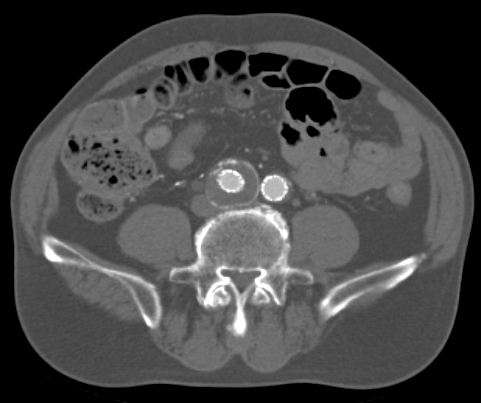Refractory Symptoms Post Iliac Aneurysm Stenting: A Venous Etiology
C. Y. Maximilian Png, Kenneth R. Nakazawa, Rami O. Tadros, Peter L. Faries, Windsor Ting.
Icahn School of Medicine at Mount Sinai, New York, NY, USA.
Objective: Peripheral iliac artery disease and iliac venous obstruction have several overlapping symptoms including lower extremity fatigue and pain. Distinguishing both can be especially challenging in the face of known arterial disease. We report a case where bilateral iliac aneurysms resulted in iliac vein outflow obstruction despite endovascular aneurysmal repair. Methods: We present a 76-year-old male with a past history of hypertension, coronary artery disease, hypercholesterolemia, abdominal aortic aneurysm and bilateral common iliac artery aneurysms s/p EVAR and a 10-year history of varicose veins with a chief complaint of bilateral leg fatigue, pain and paresthesias exacerbated by exercise. He denied any genitourinary or gastrointestinal symptoms. He had these symptoms for several years; imaging in 2014 revealed an infrarenal AAA and bilateral common iliac artery aneurysms for which he underwent EVAR. However, these symptoms continued to persist over the subsequent years and he presented to us in 2017. Physical exam was unremarkable except for bilateral medial calf telangiectasias without edema. Imaging on CT showed stable post-EVAR abdominal aortic and bilateral common iliac aneurysms with no contrast extravasation. However there was significant compression of the left common iliac vein by the right common artery aneurysm consistent with May-Thurner syndrome. 
Results: Intraoperative venograms and subsequent follow-up intravascular ultrasound (IVUS) confirmed severe stenosis in the left common iliac and proximal left external iliac veins, and additionally revealed severe stenosis in the right external iliac vein with prominent cross-pelvic collaterals. Following balloon angioplasty, we placed an 18x90mm and a 16x60mm Wallstent to treat the IVC, left CIV and EIV lesions and another 18x60mm Wallstent in the right EIV, with confirmatory venograms and IVUS demonstrating the restoration of flow and resolution of collaterals. The postoperative course was uneventful and the patient was discharged on oral anticoagulation. Within one week, his symptoms had resolved and have continued to improve months over the subsequent months post-operatively.
Conclusions: Iliac vein compression is an uncommon but possible sequela of iliac artery aneurysms; suspicion of venous claudication should be heightened in the context of symptoms refractory to aneurysm treatment.
Back to 2018 ePosters




